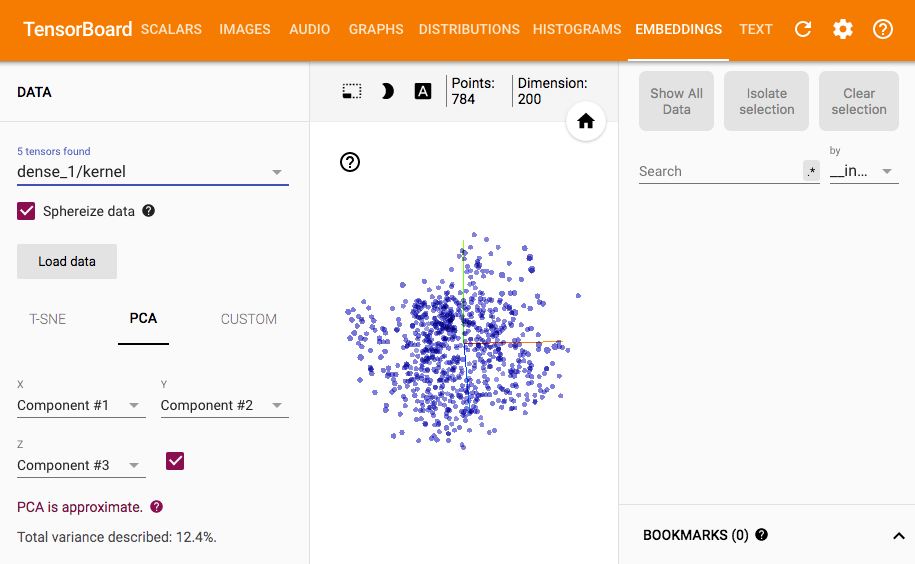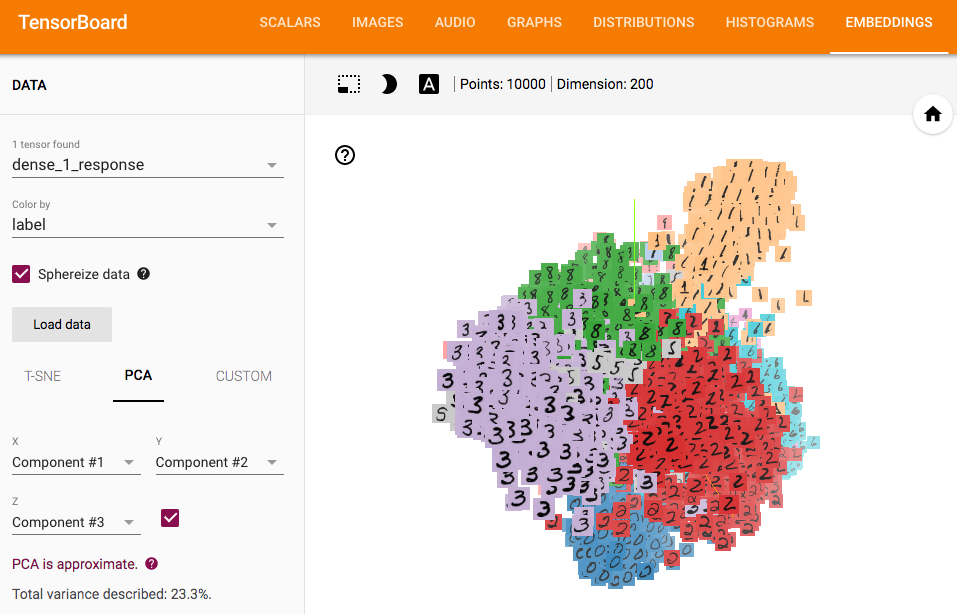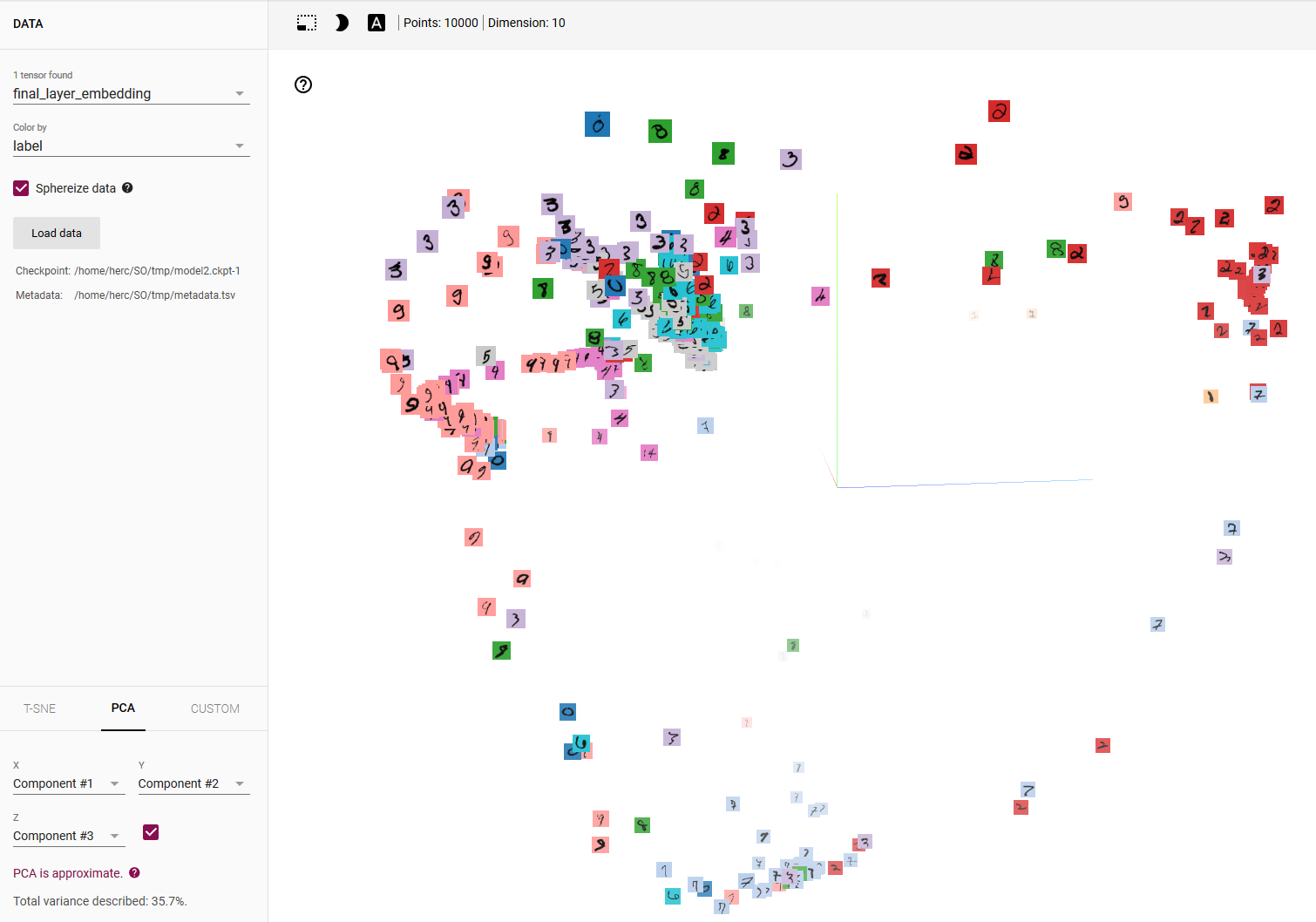I've written the following simple MLP network for the MNIST db.
from __future__ import print_function
import keras
from keras.datasets import mnist
from keras.models import Sequential
from keras.layers import Dense, Dropout
from keras import callbacks
batch_size = 100
num_classes = 10
epochs = 20
tb = callbacks.TensorBoard(log_dir='/Users/shlomi.shwartz/tensorflow/notebooks/logs/minist', histogram_freq=10, batch_size=32,
write_graph=True, write_grads=True, write_images=True,
embeddings_freq=10, embeddings_layer_names=None,
embeddings_metadata=None)
early_stop = callbacks.EarlyStopping(monitor='val_loss', min_delta=0,
patience=3, verbose=1, mode='auto')
# the data, shuffled and split between train and test sets
(x_train, y_train), (x_test, y_test) = mnist.load_data()
x_train = x_train.reshape(60000, 784)
x_test = x_test.reshape(10000, 784)
x_train = x_train.astype('float32')
x_test = x_test.astype('float32')
x_train /= 255
x_test /= 255
print(x_train.shape[0], 'train samples')
print(x_test.shape[0], 'test samples')
# convert class vectors to binary class matrices
y_train = keras.utils.to_categorical(y_train, num_classes)
y_test = keras.utils.to_categorical(y_test, num_classes)
model = Sequential()
model.add(Dense(200, activation='relu', input_shape=(784,)))
model.add(Dropout(0.2))
model.add(Dense(100, activation='relu'))
model.add(Dropout(0.2))
model.add(Dense(60, activation='relu'))
model.add(Dropout(0.2))
model.add(Dense(30, activation='relu'))
model.add(Dropout(0.2))
model.add(Dense(10, activation='softmax'))
model.summary()
model.compile(loss='categorical_crossentropy',
optimizer='adam',
metrics=['accuracy'])
history = model.fit(x_train, y_train,
callbacks=[tb,early_stop],
batch_size=batch_size,
epochs=epochs,
verbose=1,
validation_data=(x_test, y_test))
score = model.evaluate(x_test, y_test, verbose=0)
print('Test loss:', score[0])
print('Test accuracy:', score[1])
The model ran fine, and I could see the scalars info on TensorBoard. However when I've changed embeddings_freq=10 to try and visualize the images (Like seen here) I got the following error:
Traceback (most recent call last):
File "/Users/shlomi.shwartz/IdeaProjects/TF/src/minist.py", line 65, in <module>
validation_data=(x_test, y_test))
File "/Users/shlomi.shwartz/tensorflow/lib/python3.6/site-packages/keras/models.py", line 870, in fit
initial_epoch=initial_epoch)
File "/Users/shlomi.shwartz/tensorflow/lib/python3.6/site-packages/keras/engine/training.py", line 1507, in fit
initial_epoch=initial_epoch)
File "/Users/shlomi.shwartz/tensorflow/lib/python3.6/site-packages/keras/engine/training.py", line 1117, in _fit_loop
callbacks.set_model(callback_model)
File "/Users/shlomi.shwartz/tensorflow/lib/python3.6/site-packages/keras/callbacks.py", line 52, in set_model
callback.set_model(model)
File "/Users/shlomi.shwartz/tensorflow/lib/python3.6/site-packages/keras/callbacks.py", line 719, in set_model
self.saver = tf.train.Saver(list(embeddings.values()))
File "/usr/local/Cellar/python3/3.6.1/Frameworks/Python.framework/Versions/3.6/lib/python3.6/site-packages/tensorflow/python/training/saver.py", line 1139, in __init__
self.build()
File "/usr/local/Cellar/python3/3.6.1/Frameworks/Python.framework/Versions/3.6/lib/python3.6/site-packages/tensorflow/python/training/saver.py", line 1161, in build
raise ValueError("No variables to save")
ValueError: No variables to save
Q: What am I missing? is that the right way of doing it in Keras?
Update: I understand there is some prerequisite in order to use embedding projection, however I haven't found a good tutorial for doing so in Keras, any help would be appreciated.




embeddings_freqbefore you changed it to 10 and got the error? – Illogicality